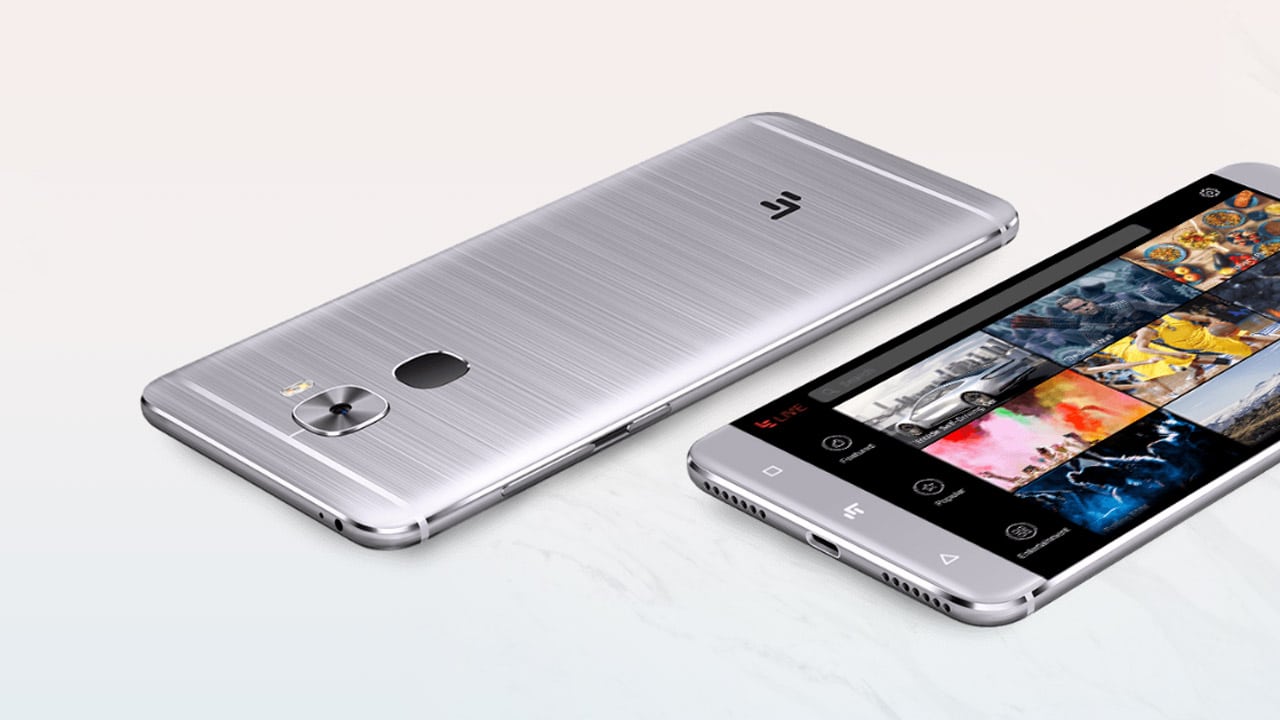News
LeEco’s flagship Le Pro 3 has beastly specs

LeEco might not ring bells outside of China, but it’s gradually becoming a force in India, and soon, the rest of the world. Headliners like the new flagship Le Pro 3 show how serious the brand has become with smartphones. With the loaded specifications of the latest model, we can’t help but welcome the handset wholeheartedly.
What makes the Le Pro 3 special are the two chips inside: Qualcomm’s top-of-the-line Snapdragon 821 processor and a total of 6GB of RAM. Both specs, which are still quite rare in smartphones nowadays, will skyrocket the handset to the top of pure performance charts. Its closest rivals for the crown would be the recently released Le Max 2 and the OnePlus 3 we unboxed a couple of months ago.
For the sake of comparison, let’s bring in the Le Max 2, which is LeEco’s other flagship device. While it has the same 6GB of RAM and just a slightly slower Snapdragon 820 processor, its 5.7-inch Quad HD display is way better than the 5.5-inch Full HD screen of the Le Pro 3. The Le Max 2 also has a better 21-megapixel camera with optical image stabilization, whereas the Le Pro 3 settles for 16 megapixels and no stabilization. It’s clear that the larger sibling specializes more in viewing and producing multimedia content.
Less specs-obsessed consumers will be glad to know that the Le Pro 3 isn’t all about numbers. The Android 6.0 Marshmallow-based handset is covered in an all-metal body with a thickness of only 7.5mm — impressive when you consider the generous 4070mAh battery. At the back you’ll find a fingerprint scanner for quick logins, and there’s a USB Type-C port supporting QuickCharge 2.0 to make the phone go from zero to 50 percent in 30 minutes. As for those seeking a 3.5mm audio jack: This phone doesn’t have it.
Pricing is largely dependent on the configuration you’re getting: 4GB RAM with 32GB storage costs CNY 1799 ($270); 6GB RAM with 64GB storage costs CNY 1999 ($300). Then we have the more expensive Zhang Yimou Edition units: 4GB RAM with 64GB storage costs CNY 2499 ($375); and 6GB RAM with 128GB storage goes for CNY 2999 ($450). The color options are rose gold, plain gold, silver, and gray, but it looks like only China will be seeing these choices for the time being.
[irp posts=”7058″ name=”LeEco’s Le Pro 3 and Le S3 smartphones invade US”]
Source: GSMArena

News
Xiaomi Redmi A3 Philippine pricing, availability
Budget smartphone with high refresh rate display

Xiaomi is bringing high refresh rate displays to its budget line with the announcement of the Redmi A3. The latest addition to the entry-level Redmi line boasts of an expansive 6.71-inch HD+ display with up to a 90Hz refresh rate.
The Redmi A3 is available in Midnight Black, Star Blue, and Forest Green. The smartphone is priced at PhP 3,399 (3GB+64GB) and PhP 3,999 (4GB+128GB) respectively for its two configurations.
Customers may preorder the phone until April 27 via Lazada, Shopee, and TikTok. General sale begins April 26th in all Xiaomi stores nationwide. Freebies are a Basic Piston Earphone for online purchases and a 3-month Viu Premium subscription for in-store purchases.
The Redmi A3’s immersive screen allows users to consume various content in high-definition with better smoothness, a boost for a phone of its price point. The screen has Corning Gorilla Glass 3 protection as well, and DC dimming to reduce blue light exposure.
The phone also sports a refined design that lets go of the iPhone-looking camera arrangement. Instead, the main camera is now in the middle as part of a watch face-looking setup similar to other Android phone offerings.
Speaking of, an 8MP main shooter highlights the back of the Redmi A3. In front is a 5MP front camera. The phone is powered by a MediaTek Helio G36 processor and runs on an Android 14-based OS. Furthermore, it has a 5,000mAh battery with 10W of USB-C charging.
Other handy Redmi A3 features for users to utilize include a 3.5mm jack, Face Unlock, and Fingerprint Unlock.
For the longest time, Google kept Pixel and Android behind two different teams. While the Pixel team dealt with devices made by and for the brand, the Android team ships a product meant for brands outside of the company’s purview. However, the days of separation are at an end. Google is officially merging its Pixel and Android teams together.
In a shocking announcement, the company has confirmed that the teams handling hardware and software will fall under a single team headed by Rick Osterloh. Prior to the merge, Osterloh was the senior vice president of devices and service, which was Google’s hardware branch. He will now oversee both hardware and software.
Because of the new leadership change, Hiroshi Lockheimer, former head of Android, will now move on to other projects within Alphabet. Of note, the change is not harsh for Lockheimer. He and Osterloh had been contemplating on the merge for a while.
Now, why the change? As is the case with everything today, it’s all because of AI. Speaking to The Verge, Osterloh explains that the merge will help with “full-stack innovation.” With how technology is these days, it’s now impossible to develop AI without having a close eye on hardware, such as in Google’s AI developments for the Pixel camera. Merging the teams will help streamline development, especially when hardware is involved.
Despite the change, outside brands, like Qualcomm’s Cristiano Amon, remains confident of Android’s capabilities outside of Google. Just expect more AI coming out in the near future.
Since the Pixel 6 series, Google continues to wow the market as one of the most unique camera designs available in the market today. This year, the brand’s Pixel 9 series might reinvent itself again with a slightly updated redesign.
Between the Pixel 6 and Pixel 8 series, Google introduced a wraparound camera island extending from the left edge to the right edge. While most smartphones today still use the traditional top-left island layout, Google’s lineup consistently grabs admiration from onlookers.
Now, according to an early leak (from Rozetked, via 9to5Google), Google might cut the camera island’s size before it reaches either side of the Pixel 9. The remaining chunk looks like a horizontal pill-shaped camera island right in the middle of the rear panel. It looks like a common camera island comically enlarged and turned on its side. Alternatively, it also looks like a webcam attached to a phone.
Based on the new leak, the new camera island will have three unknown lenses, the usual LED flash, and an unconfirmed sensor. Besides the different camera, the leak also confirms the usual tray of hardware on the side. There’s nothing too revolutionary.
As always, the Pixel 9 series is scheduled to come out in the fall of this year.
SEE ALSO: Pixel 9 series will reportedly come in four models
-

 Features1 week ago
Features1 week agoFortify your home office or business setup with these devices
-

 Events2 weeks ago
Events2 weeks agoStellar Blade: PlayStation taps cosplayers to play Eve for game’s launch
-

 Gaming2 weeks ago
Gaming2 weeks agoThe Rogue Prince of Persia looks like an ultra-colorful roguelite
-

 Accessories2 weeks ago
Accessories2 weeks agoLogitech unveils G Pro X 60 gaming keyboard: Price, details
-

 Gaming2 weeks ago
Gaming2 weeks agoStar Wars Outlaws release date revealed
-

 Reviews1 week ago
Reviews1 week agorealme 12+ 5G review: One month later
-

 Gaming2 weeks ago
Gaming2 weeks agoLenovo confirms development of a Legion Go 2
-

 Deals2 weeks ago
Deals2 weeks agoTCL P635 TV: Big savings for TCL’s anniversary




















